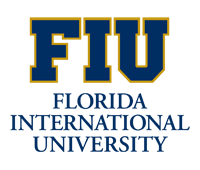Below is a summary of the abstract you submitted. Presenting author(s) is shown in bold.
If any changes need to be made, you can modify the abstract or change the authors.
You can also download a .docx version of this abstract.
If there are any problems, please email Dan at dar78@pitt.edu and he'll take care of them!
This abstract was last modified on March 18, 2024 at 9:53 p.m..

Bacteriophages, one of the most abundant microbes on earth, infect bacteria and replicate. Despite their abundance much is unknown about their molecular biology, more specifically, the genes they contain and their corresponding functions. In this study we report on the novel phage GreenIvy, isolated from an enriched soil sample using the bacterial host Microbacterium foliorum in Miami, FL by students of Florida International University. The phage was purified and amplified in preparation for DNA extraction. Extracted DNA was sent to the Pittsburgh Bacteriophage Institute and sequenced on the Illumina platform. Genome annotation was conducted using a variety of bioinformatics tools including Glimmer, Genemark, and Starterator to determine coding potential, and HHpred, BLAST-phagesDB, and BLAST-NCBI to determine gene function. Transfer RNAs were identified using ARAGORN and tRNAscan-SE and translational frameshifts were identified using Expasy tools. The GreenIvy genome is 40,254 base pairs long with 64.0% GC content, circularly permuted end, and contains 61 genes. Of the 61 genes auto-annotated, 33 have an unknown function, 27 have assigned functions, and one gene is deleted. GreenIvy is a Siphovirus that belongs to the EA cluster, specifically subcluster EA5 and has a lytic life cycle. A t-RNA was identified at bp 27,627, coding for Alanine (Ala) with the anticodon TGC. A translational frameshift was found on gene 16 at bp 9420 with the slippery sequence CGGGGGGCG.
